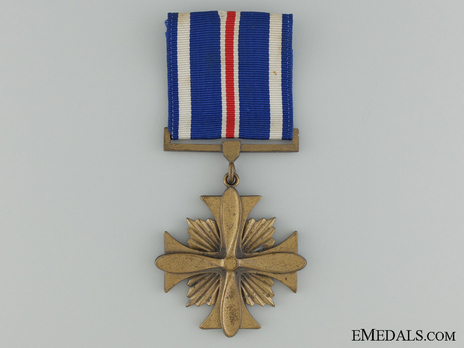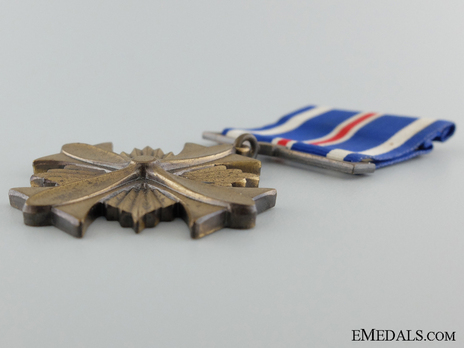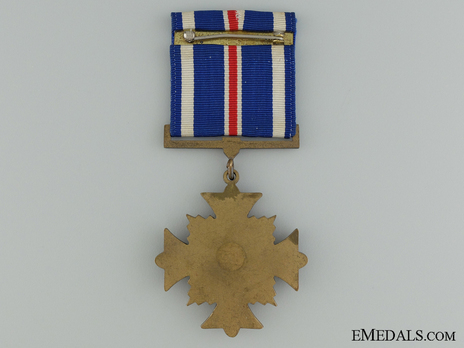Distinguished Flying Cross
SKU: 02.USA.0114.101.01
Estimated market value:



Estimated market value:
Attributes
History
The Distinguished Flying Cross was established by President Calvin Coolidge by Act of Congress on July 2, 1926, and was made retroactive to reward service backdating to April 6, 1917. Before the Second World War, the Cross was awarded to aviation pioneers in recognition of breaking long distance, endurance, or altitude records. In 1927, the award criteria of the Cross was amended to be restricted to Officers and enlisted men of the Armed Forces who distinguished themselves by heroism or extraordinary achievement while in aerial flight. During wartime, members of the Armed Forces of friendly foreign Nations are also eligible for the award. A notable recipient of the Cross is Amelia Earhart, who was the only female civilian to be awarded the Cross.
Bronze or silver oak leaf emblems are worn on the ribbon of members of the Army and Airforce to denote additional awards, while gold and silver star emblems are worn on the ribbon of members of the Navy, Marine Corps, and Coast Guard to denote subsequent awards. When the Cross is awarded for acts of heroism, a Combat Distinguished Device (a bronze emblem in the shape of a "V") is worn on the ribbon of members of the Air Force, Navy, and Marine Corps.
There may be additional versions of the Cross which vary by composition.
It is uncertain if the Cross was officially engraved with the recipient's details on the reverse.

Versions
$40+ USD
Bronze
Rev: [RECIPIENT DETAILS]
44mm
The rank, regiment and actions of the recipient will influence the value of the decoration. Numbered versions of the Bronze Cross may be ...
N/A
Bronze
Rev: [engraved] S. SGT. / WILLIAM E. KELLEY JR. / A.C
44mm
The rank, regiment and actions of the recipient will influence the value of the decoration.


Comments
Sign in to comment and reply.



Scroll Top